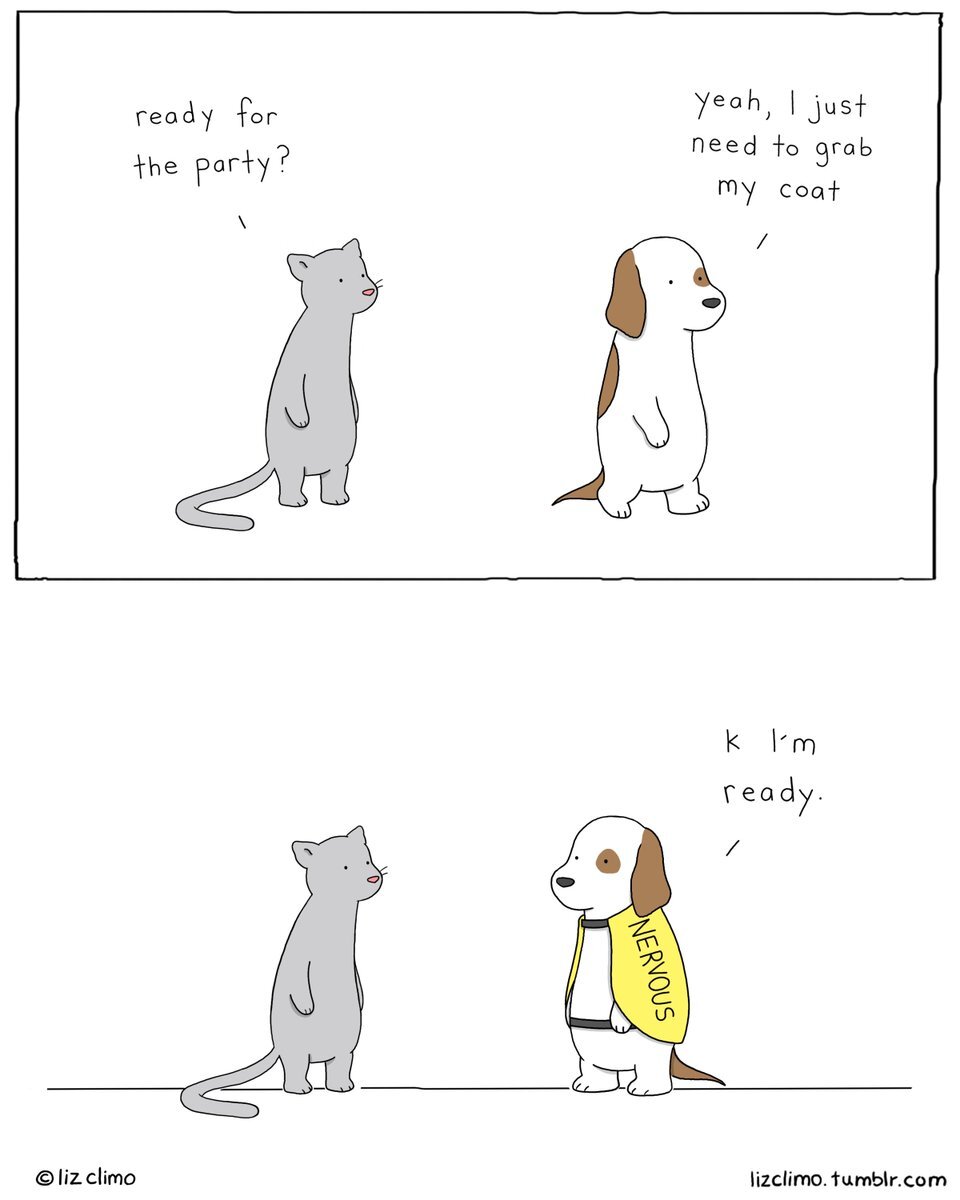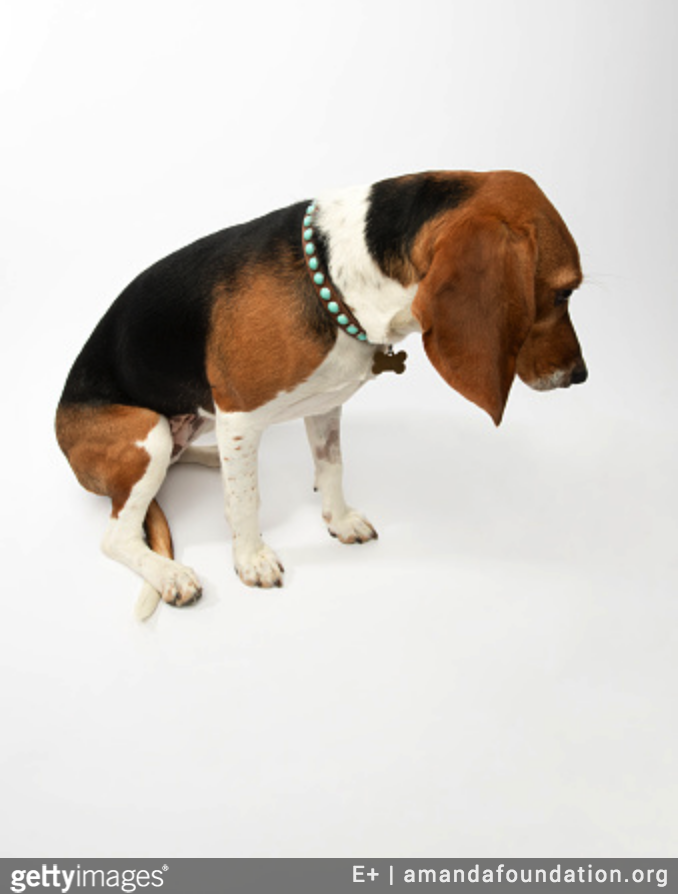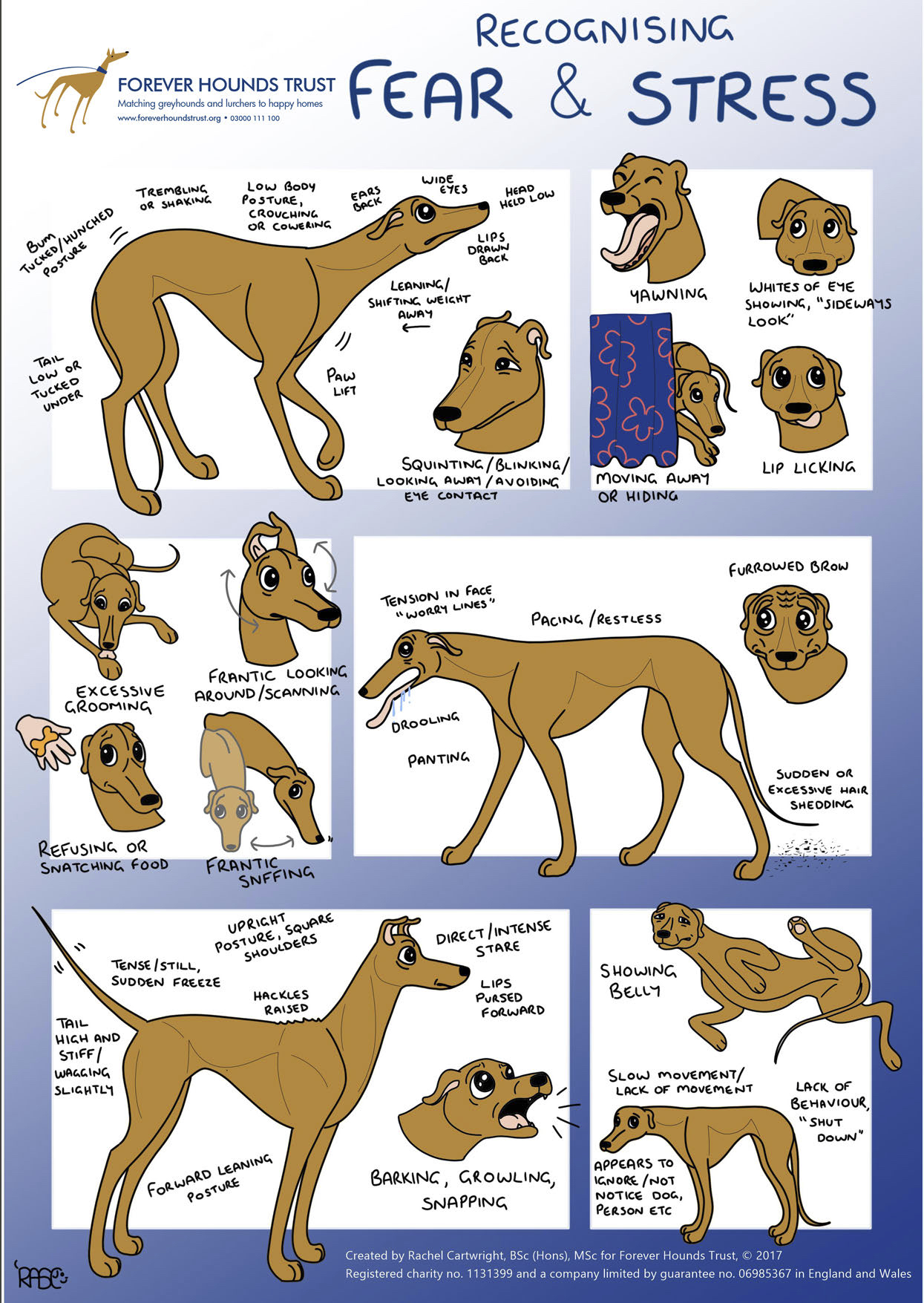Signs Your Dog May Be Feeling Stressed
Home / Gaia Toast / Signs Your Dog May Be Feeling Stressed
Comic Credit: Liz Climo
As pet owners, it is important to know when your dog is feeling stressed and figure out the triggers. You can spot some of these signs in your dog’s body language and find a way to understand any behavioural changes. These observations are also useful information for your vet, so he can piece together what may be wrong with your pet.
Learning to read your dog’s body language can take some time, but don’t give up! It is really an endeavour that’s worthwhile and will definitely improve your relationship with your furry friend.
Your dog may be feeling stressed but act in one of the following ways:
1. Feeling stressed but showing signs of appeasement
This is a dog feeling uncomfortable and trying to avoid the source of stress i.e. disengaging
2. Feeling stressed and acting out in aggression
This is a dog showing he is alert, with body language ready to defend or attack.
Your dog may start off with behaviour that is trying to avoid the source of stress e.g. an approaching human, or dog, but may escalate into defensive mode, where it turns into aggressive behaviour.
To make it easy, we’ve broken it down into parts. Most importantly, we encourage you to start with an open mind and try to discard any assumptions. You’ll need to watch these 5 areas when reading your dog’s body language:
Ears
Eyes
Mouth
Tail
Body Posture
There are pictorial examples below which can also help you recognise signs of stress in your dog.
Image Credit: Getty Images
1. Ears
The position of your dog’s ears can speak volumes about his state of mind:
Ears held forward, rigid and perked up shows alertness. This is a dog that’s attentive to his surroundings.
Ears held sideways or pulled back and laying flat against the head shows uncertainty (see image). This is common for a dog that is cautious about being approached.
2. Eyes
Image Credit: Getty Images
Watch the direction of your dog’s eyes.
Eyes looking away but still looking out of the corner of eyes. You can see the whites of their eyes showing in the corner, similar to what we know as giving the side-eye (see image). This is a dog that is trying to avoid eye contact but still monitoring what’s bothering them.
Eyes staring directly and intently for a long time. This is a dog that is alert and directing his attention to something specific. This can be a precursor to aggression.
Other signs of stress can include rapid and excessive blinking and/or squinting.
3. Mouth
The most obvious sign is vocalising. Your dog may whine or whimper in fear or discomfort. He may also start barking at the source of stress.
But if your dog is not very vocal, you should look out for gestures that show stress:
Tensed jaws and tight wrinkles around the corner of the mouth.
Showing gums and lip curling. This can escalate into obvious snarling, growling and readiness to snap in aggression.
Image Credit: Getty Images
Other common gestures showing stress are regular behaviour but happen for no clear reason. This is your dog’s attempt to lessen stress. These include:
Excessive panting even though he has not exercised or in the sun
Excessive licking of lips and nose (see image)
Excessive drooling
Repeated yawning
Sometimes as a way to cope with the stress and nervousness, your dog may start checking out his crotch, licking and chewing at it.
4. Tail
Image Credit: Getty Images
It is a misconception that a dog wagging his tail is a happy dog. In fact, tail wagging just tells you that your dog is aroused or showing interest in something.
Take note of the following:
Position and height of the tail in relation to the rest of his body
Tail above the level of the spine. This is associated with a dog that is assertive and possible sign of aggression
Tail pointing downwards. This is associated with appeasement.
Tail tucked tightly under the body and between the legs. This is a dog that’s feeling quite stressed (see image).
Rapid but narrow wagging (means it doesn’t whip from side to side) shows that your dog is feeling uncomfortable.
5. Body Posture
Image Credit: Getty Images
Like people, you can observe how your dog may feel by how he holds his posture.
Keeping the body low towards the ground or actively avoiding the source of stress is an sign of being defensive. This is a dog that is attempting to disengage.
Shifting the body forward and towards the source of stress shows assertiveness (see image). This is a dog that’s ready to engage and can be a sign of aggression.
Rolling over and exposing the belly. This is tricky as many would interpret this as the dog being comfortable and friendly. It is also possible that your dog may be trying to disengage and look less threatening. So watch for signs of stress in other parts of your dog’s body to be sure.
Illustrated guide from Forever Hounds Trust.
Other behavioural signs of stress can include
Excessive scratching
Muscles tensing up
Shivering or trembling
Shaking off
Pacing around
Hiding and slinking away
Showing reluctance to move away from a particular spot
Urinating and pooping
Sources of stress can include meeting new people, loud noises, former traumatic experience etc.
There is an excellent illustrated guide by Forever Hounds Trust. Click the image to download.
What can I do about it?
Remove the source of stress e.g. another dog, loud noisy machinery or move your dog to another location and calm him down by bringing back a routine. Make him sit and then feed him treats or pet him affectionately, whatever constitutes a norm for him.
If your dog is showing signs of aggression, you can try to snap them out of it. The ASPCA suggests using a sound like a loud clap or a shout. You can also use a spray bottle to spritz water on your dog. Another way is physical separation using a barrier (or whatever is available) e.g. a chair
Avoid over comforting your dog as this may indicate to him that his fears are warranted.
Choose a safe space at home i.e. a spot where you can bring your stressed dog to calm down or for him to retreat to. You can try using a designated mat or a spot with his toys.
Take it slow. Especially for unavoidable things such as a visit to the vet or meeting a new family member. Give your dog time to get used to it and he will start to accept these new experiences as the norm.
Provide plenty of opportunities to socialise with other dogs. This will normalise experiences with other dogs and help to reduce stress.
Give your dog plenty of exercise via walks and playful activities to release any tension







